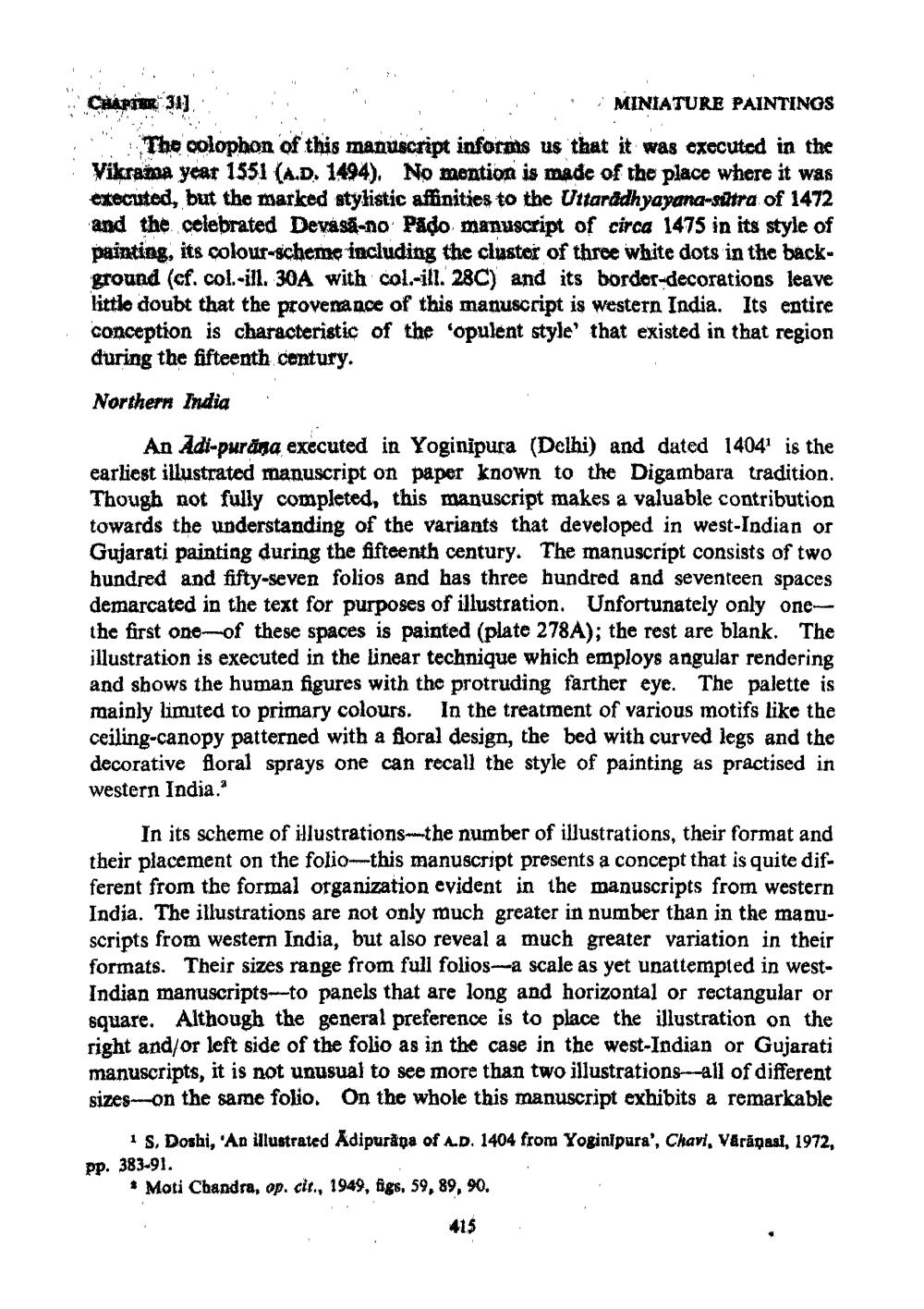________________
CHAPTER 31),
MINIATURE PAINTINOS ..". The colophon of this manuscript informs us that it was executed in the
Vikrama year 1551 (A.D. 1494). No mention is made of the place where it was executed, but the marked stylistic affinities to the Uttaradhyayana-sutra of 1472 and the celebrated Devásá-no Pado manuscript of circa 1475 in its style of painting, its colour-scheme including the cluster of three white dots in the background (cf. col.-ill. 30A with col.-ill. 28C) and its border-decorations leave little doubt that the provenance of this manuscript is western India. Its entire conception is characteristic of the 'opulent style' that existed in that region during the fifteenth century.
Northern India
An Adi-purāna executed in Yoginipura (Delhi) and dated 14041 is the earliest illustrated manuscript on paper known to the Digambara tradition. Though not fully completed, this manuscript makes a valuable contribution towards the understanding of the variants that developed in west-Indian or Gujarati painting during the fifteenth century. The manuscript consists of two hundred and fifty-seven folios and has three hundred and seventeen spaces demarcated in the text for purposes of illustration. Unfortunately only one the first one of these spaces is painted (plate 278A); the rest are blank. The illustration is executed in the linear technique which employs angular rendering and shows the human figures with the protruding farther eye. The palette is mainly limited to primary colours. In the treatment of various motifs like the ceiling-canopy patterned with a floral design, the bed with curved legs and the decorative floral sprays one can recall the style of painting as practised in western India.
In its scheme of illustrations the number of illustrations, their format and their placement on the folio--this manuscript presents a concept that is quite different from the formal organization evident in the manuscripts from western India. The illustrations are not only much greater in number than in the manuscripts from western India, but also reveal a much greater variation in their formats. Their sizes range from full folios-a scale as yet unattempted in westIndian manuscripts-to panels that are long and horizontal or rectangular or square. Although the general preference is to place the illustration on the right and/or left side of the folio as in the case in the west-Indian or Gujarati manuscripts, it is not unusual to see more than two illustrations--all of different sizes--on the same folio. On the whole this manuscript exhibits a remarkable
* S. Doshi, 'An illustrated Adipuråpa of A.D. 1404 from Yoginipura', Chavi, Värāgasi, 1972, pp. 383-91. * Moti Chandra, op. cit., 1949, figs. 59, 89, 90.
415




